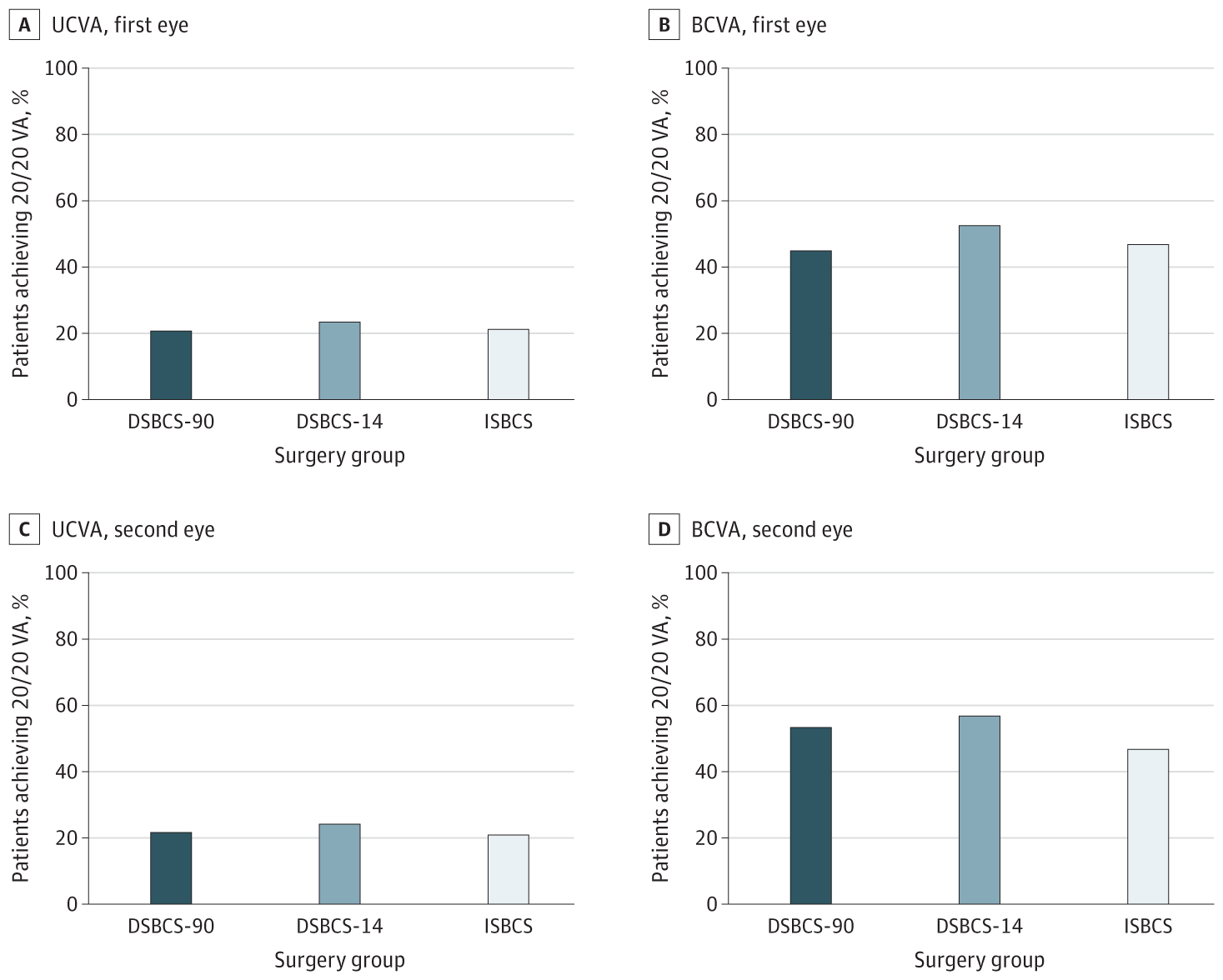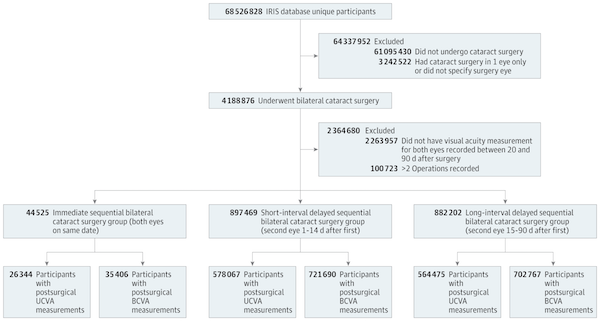In this large population-based study using data from American Academy of Ophthalmology Intelligent Research in Sight (IRIS) Registry, Dr. Cecilia Lee and her co-authors looked at visual acuity outcomes after bilateral cataract surgery. Specifically, they compared outcomes after immediate sequential bilateral cataract surgery or ISBCS (patients undergo surgery for both eyes on the same day, as separate procedures), and delayed sequential cataract surgery or DSBCS (patients have the surgeries on separate days). ISBCS is less commonly performed in the United States, but is growing in popularity and may have some advantages such as fewer follow-up visits, immediate vision correction, and lower cost. However, many ophthalmologists prefer delaying the second surgery in order to assess vision after the first surgery, in order to make adjustments for the second eye.
The IRIS Registry has data from almost 2 million people who have undergone bilateral cataract surgery in the United States, making it one of the largest datasets available for comparing ISBCS and DSBCS outcomes. Thanks to the large amount of data, the authors were also able to break the DCBCS patients into 2 groups: those who had both surgeries within 2 weeks and those who had their second surgery between 14 and 90 days after the first. This revealed some interesting findings: when compared to patients who had their surgeries more than 2 weeks apart, those who had same-day surgery had slightly worse visual acuity outcomes and those who had their surgeries within 2 weeks of one another (but not on the same day) had slightly better visual acuity outcomes.

Both DSBCS groups (2 weeks between surgeries, or 15-90 days between) had small but statistically significantly better outcomes than the same day group. The proportion who achieved uncorrected 20/20 in the second surgery eye was also higher for the 2-week DSBCS group (24.2%) and the 15-90 day DSBCS group (21.7%) compared with ISBCS (21.0%). These results are consistent with the possibility that having a waiting period between surgeries may have allowed for adjustments that resulted in better second eye outcome. But the authors also found that race, insurance type, and comorbid eye disease were associated with worse outcomes, suggesting that other factors may have influenced visual outcomes among surgery groups.
Based on data from nearly 2 million bilateral cataract surgery patients, this study found that same day bilateral cataract surgery was associated with worse visual outcomes when compared with delayed bilateral cataract surgery, although the authors note that the differences are small and may not be clinically relevant. In addition, other factors such as race, type of insuarance coverage, and preexisting eye disease were independently associated with worse outcomes, something that physicians should considered when counseling patients preoperatively. This study was unique in analyzing data from such a large cohort, but authors caution that further studies are needed to evaluate other potential confounders that could explain the small outcome differences found between the surgery groups.
Owen JP, Blazes M, Lacy M, Yanigihara RT, Van Gelder RN, Lee AY, Lee CS, IRIS Research Analytic Center Consortium. Refractive Outcomes After Immediate Sequential vs Delayed Sequential Bilateral Cataract Surgery. JAMA Ophthalmology. July 2021;139(8):876-885. doi:10.1001/jamaophthalmol.2021.2032.

